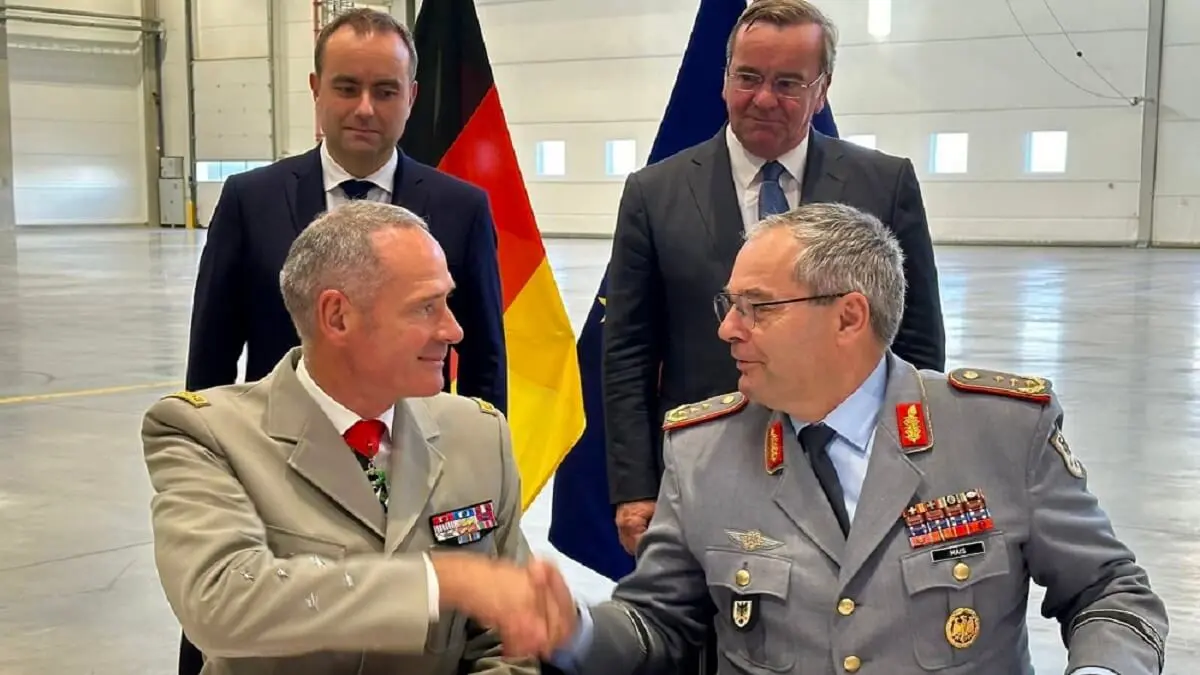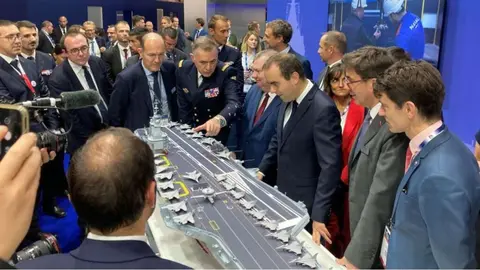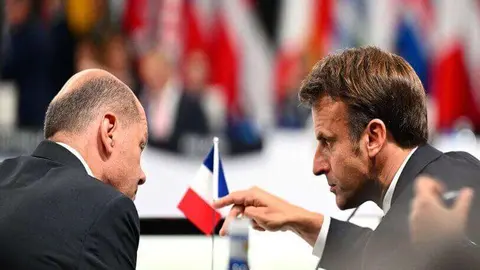Germany and France revive their project for a tank of the future in which Spain is not in, but is expected

Berlin and Paris have just staged a showcase agreement to try to bring out of its lethargy the development of what is intended to be the main and most powerful terrestrial weapons system of the mid-21st century and the reference for NATO countries.
The performance took place on Thursday, 21 September, at the French air base at Évreux, about 100 kilometres west of Paris, where the Franco-German airlift squadron "Rhein/Rhine", a unit flying American Lockheed Martin C-130J Super Hercules aircraft with crews of both nationalities, is based.
The protagonists of the consultation were the German and French defence ministers, Sebastien Lecornu and Boris Pistorius. The French Army Chief of Staff, General Pierre Schill, 56, and the German Army Inspector General, General Alfons Mais, 61, were the guest stars.
Both signed the programmatic bases of the High-Level Common Operational Requirements Document (HLCORD) of the long-stalled project for the future Franco-German battle tank, known as the MGCS (Main Ground Combat System).
The HLCORD document, which has been hastily drafted since the July meeting of the two July ministers in Berlin, sets out the general requirements for the weapon system's capabilities. Boris Pistorius said that its content "is more concrete today than ever before and as concrete as it can be". And while a couple of years earlier it was envisaged that its chains would be in place by 2035, Minister Lecornu said that, to be "realistic and flexible", it would be in place by 2040-2045.

Head of a family of land-based platforms
The different national security interests of Germany and France, the simmering geopolitics of Europe, and the lessons learned and spillover from the war in Ukraine have all had to converge to unlock the MGCS. Of course, the business expectations of the large defence industries that create wealth and employment in both nations have also played a role.
Paris and Berlin have awarded the role of prime contractor equally to Germany's Krauss-Maffei Wegmann (KMW) and France's state-owned Nexter Defense Systems and forced their concentration in the KNDS partnership. In 2019, Chancellor Merkel pushed for Rheinmetall to be part of the project, which, if realised, will be the first Franco-German battle tank.
France's Directorate-General for Armaments (DGA) insists that the MGCS is a "completely new" weapon system. This is accepted by its German counterpart, which wants the future tank to be the big brother of a family of modularly built platforms, both manned and robotic and mixed. But the leadership of the project rests with Germany and its industries.

"We don't want it to be a new Leclerc, or a new Leopard 2," Lecornu and Pistorius have made clear. The MGCS is intended to take over from the French Leclerc tank, of which nearly 900 have been built and are in service in the Emirates and Jordan, and the German Leopard 2, of which more than 3,000 have been built and remain in the armies of numerous countries around the world, including Spain.
Both have a weight of around 55-58 tonnes and a 120-millimetre gun, but there are doubts about their ability to stand up to the new Russian T14 Armata tank with a 125-millimetre gun. Germans and Gauls want the MGCS to incorporate artificial intelligence to aid its governance, advanced electronic warfare equipment, secure satellite communications, armour that provides very high protection against high penetration projectile impacts, and laser and electromagnetic weapons.
Of course, it must be equipped with a conventional large-calibre firearm, i.e. a cannon. And this is where negotiations are slowing down between engineers and staff officers of the two armies. France and its Nexter company are banking on its new 140-millimetre Ascalon. The Bundeswehr and the German firm Rheinmetall, on the other hand, are in favour of theirs, which is the 130mm Rh-130 L/51. This is just a sample of the disagreements, which both Pistorius and Lecornu want the military to resolve by the end of the year.

From the Leopard 2E to the MGCS... if it comes to pass
Does Spain play a role? None, for the moment. It is an observer... albeit an advantaged one. With the Sánchez government in office and expectations of forming a new executive in a few weeks' time or calling a general election at the end of the year or early 2024, neither the Ministry of Defence nor the Moncloa dare say a single word about it.
The army, led by General Amador Enseñat, has been expressing its interest in the project in writing for years to the Ministry of Defence, headed by Margarita Robles, and to the Director General of Armaments and Material, Admiral Aniceto Rosique. So Berlin and Paris have already made a note that the Madrid government, whichever one it is, will end up joining the project. They also envisage that Italy -another advantageous observer- which needs to replace its C1 Ariete battle tank -of the same generation as the Leclerc and Leopard 2, but which it has not been able to export.
Spain's accession will not happen whenever the Madrid government wants it. Ministers Lecornu and Pistorius have put on the table in Évreux that they will open the door of entry when their military have defined the so-called General Staff Requirements. These are the concrete operational capabilities that the French and Germans are demanding of the new tank and that the industry must translate into reality. This is the same process that has been followed prior to Spain's entry into the future European NGWS/FCAS fighter.

The Army's Land Force has 219 Spanish Leopard 2E battle tanks -based on the Leopard 2A6 version- and a small batch for recovery and towing of damaged vehicles (16) and others for crew training (4). They are attached to the mechanised brigades "Guadarrama" -deployed at the military base of El Goloso (Madrid)-, "Guzmán El Bueno", at the Cerro Muriano base (Córdoba), "Extremadura", with its regiments in Botoa (Badajoz), and "Aragón", at the San Jorge base in Zaragoza.
Licensed by Rheinmetall and after arduous negotiations, the vast majority of Leopardo 2E were manufactured by General Dynamics European Land System-Santa Barbará at its factory in Alcalá de Guadaíra (Seville) between December 2003 and 2008, began to be received by the Army in 2004 and have now accumulated almost 20 years of service. The technologies of other Spanish companies, such as Amper Indra, Navantia, SAPA Placencia and Tecnobit, contributed to their construction and equipment.

As the years do not pass in vain, on 22 August, the Council of Ministers authorised a "stable contractual framework" for three years - until 31 December 2026, extendable for a further three years - worth 208 million euros to "maintain its operability" and ensure that its conservation "is not affected". The Executive understands that the Leopard 2E "provide an important deterrence task within the strategic needs of the Army", reads the explanation offered by the Government of the nation.



